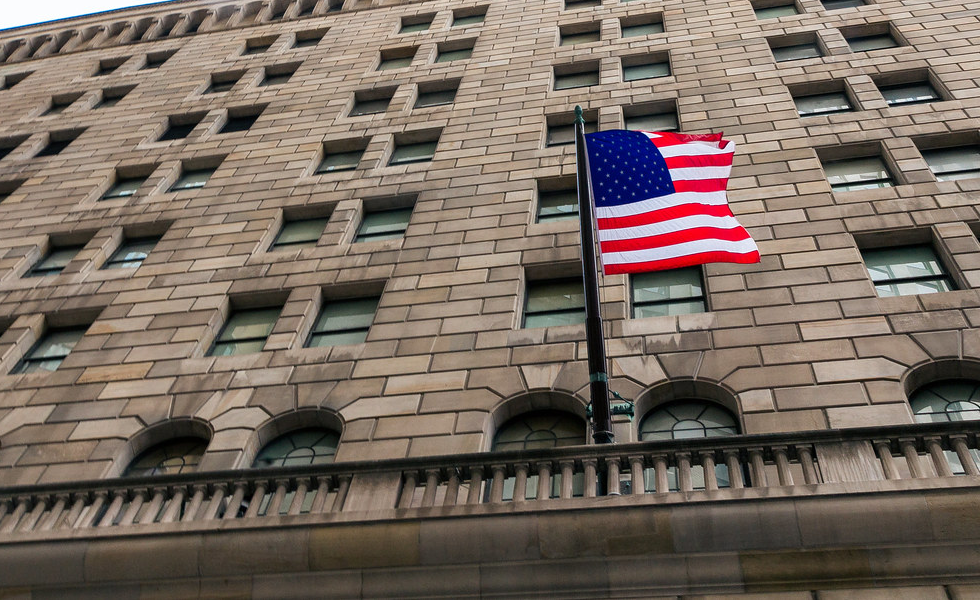Monex Europe: Fed tries to install confidence, but markets aren’t buying it
Monex Europe: Fed tries to install confidence, but markets aren’t buying it

The Federal Reserve raised the Fed funds target range today by 25 basis points to 4.75-5.00%, a move that was in line with the consensus amongst economists and within markets, but one that wasn’t a foregone conclusion by any stretch of the imagination.
Heading into today’s meeting, the FOMC had a difficult choice of what to prioritise, restoring price stability or maintaining financial stability. This trade-off had markets flipping between a 25 basis point hike and a hold in the fortnight running up to today’s decision, and while market pricing eventually settled in favour of a hike at an implied probability of 80%, the economist estimates were still divided with some analysts even calling for a rate cut.
Ultimately, policymakers chose to tighten monetary conditions further in order to bring inflation down, but by doing so, they also aimed to underpin confidence in the macroprudential measures that are already actively being used to mitigate any further financial stability risks. Their ambition to signal confidence wasn’t just implicit, as the rate statement from February was edited to incorporate the line 'the US banking system is sound and resilient' as early as the second paragraph.
While trying to signal unwavering confidence within the US financial system, the Fed did have to recognise the role financial stability concerns will now play in its policy setting. The rate statement noted that 'recent developments are likely to result in tighter credit conditions for households and businesses and to weigh on economic activity, hiring, and inflation,' hinting at the idea that financial conditions could do some of the Fed’s dirty work for them.
With tighter financial conditions offsetting some hotter-than-expected economic data, the path forward for the Fed is now much less hawkish than commentary up to and including Powell’s Congressional testimony suggested. This led the Fed to dial down its forward guidance.
Within the rate statement, staff replaced the clause 'ongoing increases in the target range will be appropriate' with 'some additional policy firming may be appropriate', while the median dot plot projection for end-2023 was maintained at 5.125% despite Powell’s comments just two weeks ago that this would likely be raised in the latest forecast round. This led markets to view the latest interest rate decision as dovish, despite the Fed’s ambition to signal that it can still achieve a soft landing and that the balance of risks for the Fed funds rate remains tilted to the upside.
Fed’s SEP projections largely meet our expectations as the deterioration in credit conditions are incorporated
The Fed’s latest dot plot projections showed the median estimate for the end-2023 Fed funds rate stable at 5.125%, as we expected, signalling one further rate hike as the most likely option. Meanwhile, the median projection for end-2024 was raised slightly to 4.25%, suggesting just 87.5bps worth of cuts next year as opposed to the 100bps projected back in December.
By comparison, we had expected the end-2024 dot to be revised up slightly higher to 4.375%, showing just 75bps worth of cuts. In our view, the adjustments to the dot plot support the Fed’s previous messaging that rates are likely to remain 'higher for longer,' which is a less dangerous path than raising rates in the short-term to a higher terminal rate as alluded to in inter-meeting commentary by FOMC officials prior to the regional banking crisis.
It is worth noting, however, that the dispersion of the Fed projections skewed even more hawkish than in December. The high, low, and central tendency dots were either left unchanged or revised up; none were reduced. That being said, this partially reflects the recent departure of Vice Chair Lael Brainard, a noted dove who has since joined the National Economic Council, but largely signifies the weight financial stability plays in the Fed’s current considerations. Should credit conditions not tighten significantly and no further ruptures become visible within the US banking system, the appetite amongst the FOMC to take rates higher is naturally still there.
The main adjustment to the Fed’s economic projections from its previous set of forecasts was the downward revisions to GDP, most visible in 2024. The Fed knocked down its GDP forecast by -0.1% in 2023 and -0.4% in 2024, but bumped up its 2025 forecast by +0.1%. Unemployment forecasts were roughly unchanged, with a -0.1% downgrade to 2023 but a +0.1% upgrade to 2025. PCE inflation was revised up by +0.2% in 2023, while core PCE was bumped up by +0.1% in both 2023 and 2024, but other longer-term forecasts were left untouched.
Markets aren’t buying the Fed’s message
Despite the continued hawkish bias in the Fed’s dot plot projection, which if anything had increased since December, markets have priced a continually dovish path forward for the Fed. Overnight index swaps are pricing in more rate cuts from May’s meeting up until year-end than the 50bps that was priced in prior to today’s announcement, while the US Treasury curve has flattened with the 2Y yield down -20bps and the 10Y yield down -14bps.
With the rates space interpreting today’s decision as dovish, US equities initially rallied, but the move has since faded after flash headlines from Treasury Secretary Yellen’s appearance in front of Congress suggested a broad increase in the FDIC’s coverage is not being considered.
The renewed risk aversion evident in US equities hasn’t mapped across to the FX space, however, as currency traders continue to pounce on the shifting rate differentials. High beta currencies within the G10 continue to make substantial inroads against the dollar, while the euro is also sitting close to the top of the board as the Fed’s messaging contrasts directly with repeatedly hawkish tones from ECB officials as recently as this morning.
However, the extent to which the dollar weakness persists is highly dependent again on the stock market reaction over the coming days. While Chair Powell highlighted that deposit flight has stabilised in the past week, Yellen’s latest comments suggest that confidence in regional banks could take another hit.
A renewed rout in US banking stocks, especially to the extent that it impacts the flagship names, will likely keep risk conditions on a tentative footing which should continue to support the dollar on a tactical basis.








